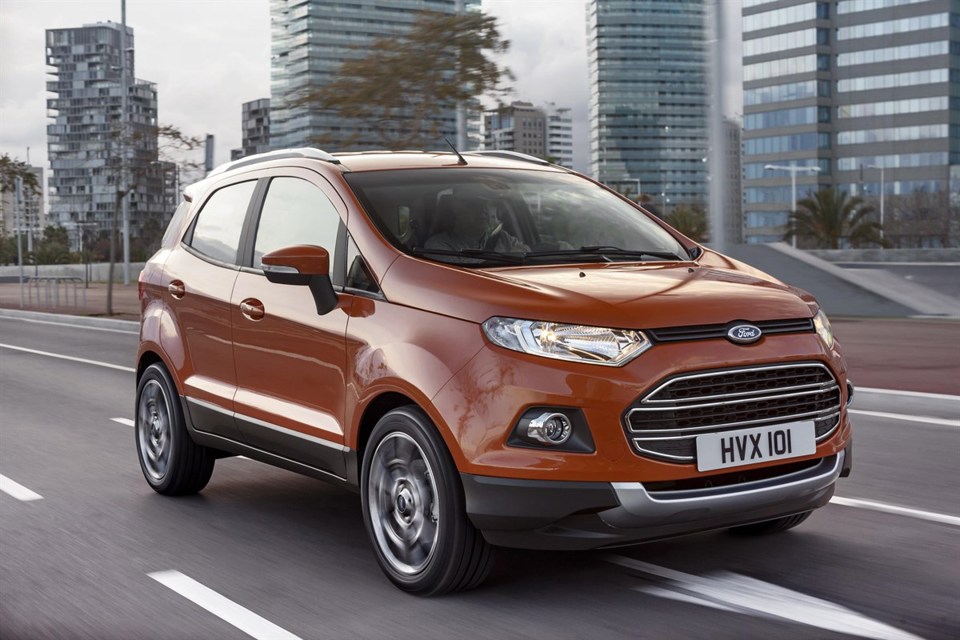<p>
<p> <strong>By Jay Nagley, Redspy managing director</strong></p> <p> <strong>The news that Ford is to introduce a three-model range of SUVs – EcoSport, Kuga and Edge –demonstrates that the SUV market has now grown well beyond a single segment.</strong></p> <p> The situation is a bit like the origin of the hatchback: at first it was a niche made up of the Renault 16 and Austin Maxi, before it grew to dominate almost every sector.</p> <p> In the case of SUVs, even the strictest definition gives them 11.9% of the market for the first quarter of this year, compared to 10.1% last year.</p> <p> The SUV segment is now the third largest by volume, albeit a long way behind superminis and lower medium cars.</p> <p> However, if you calculate the sector size by value, the high average deal price of an SUV narrows the gap considerably.</p> <p> It is figures like these that are attracting the likes of Ford to a sub-segment of the SUV market. The introduction, in particular, of the EcoSport is a no-brainer.</p> <p> A Fiesta-sized SUV-lite is ideal for people who want something small and affordable, and these B-segment SUVs avoid one of the disadvantages of larger SUVs. They carry no penalty in terms of accommodation.</p> <p> The larger brother to the Kuga is a more interesting proposition.</p> <p> When the first-generation Kuga was being considered by Ford, there was a lot of internal scepticism that Ford could successfully sell any SUV in Europe, following successive flops with the Nissan-based Maverick One and Mazda-based Maverick Two.</p> <p> However, the SUV market is the one segment where non-premium brands are able to sell £30,000-plus vehicles in decent numbers.</p> <p> For example, Hyundai and Kia sell large numbers of Santa Fes and Sorentos, whereas Korean executive saloons at that price would be unthinkable.</p> <p> At present, about 40% of the SUV market is made up of compact models such as the Kuga or Tiguan. The next class up – executive SUV – is almost as large, at around 35%.</p> <p> This class has two broad types of model: the first made up of prestige models such as the Range Rover Evoque or BMW X3; the second of larger models from non-premium manufacturers such as the Kia Sorento.</p> <p> With sales of 25,000 so far this year, this class is one of the most attractive parts of the whole car market to any non-premium manufacturer offering a credible alternative.</p> <p> There are many first-time buyers in this sector, so their buying preferences are more fluid than in more established sectors.</p> <p> For example, someone who has had four BMW 3 Series models is unlikely to change to a volume brand, but someone buying their first SUV may be open-minded.  However, the cars do have to be suitable for Europe.</p> <p> The collapse of Jeep sales in the UK in the past 10 years serves as a warning that simply shipping something big and American to Europe is no strategy at all.</p> <p> In this context, the comments of Ford’s marketing boss, Jim Farley, are a bit worrying.</p> <p> He has been quoted as saying: “No other company can touch Ford’s expertise, global portfolio and credibility when it comes to SUVs.”</p> <p> Telling that to the country where Land Rover is based is tempting fate. Talking of Ford, the Edge is final proof that there will not be a new Ford Capri any time soon.</p> <p> As the Americans say: “Do the math.”</p> <p> Each sub-segment of the SUV market accounts for more than 2% of the total market. The whole of the affordable coupé sector is less than 1% of the market.</p> <p> Given that most non-premium coupés have the lifecycle of a fruit fly it just does not make sense to put resources into such a car, when the potential returns are so much bigger elsewhere.</p> <p> In any case, a stylish SUV appeals to exactly the same sort of people that would have once bought a coupé. For proof of that, just look at the Range Rover Evoque.</p></p>
The biggest growth is from 4x4xfar
- By
- |
- 8 May 2013















Login to comment
Comments
No comments have been made yet.